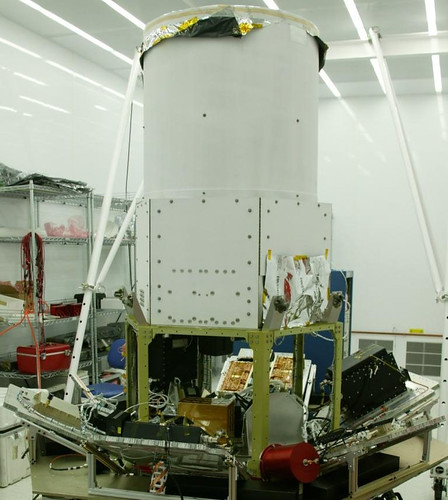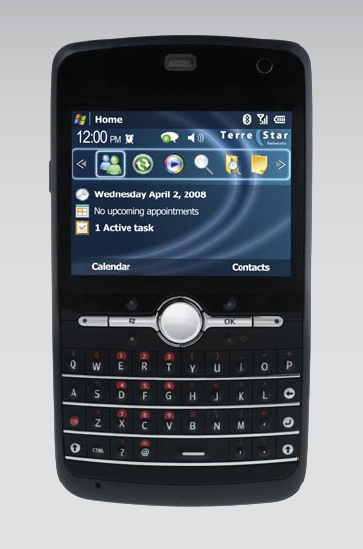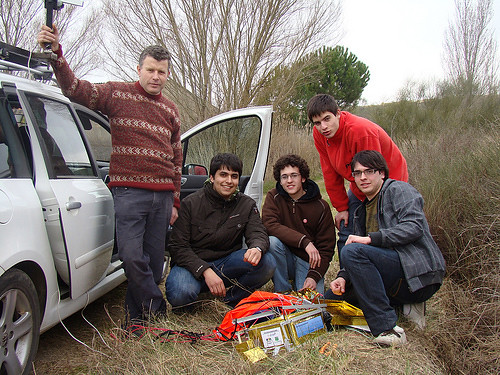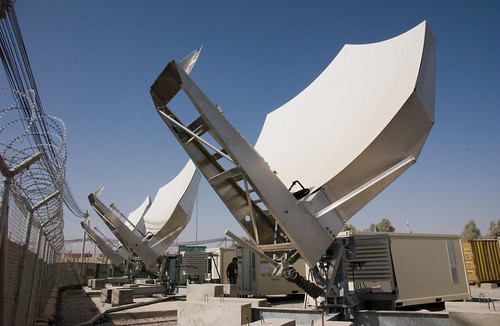Good On Ya, Mate!
Monday, April 27th, 2009
Americom Government Services (AGS) has been chirping about its "hosted payload" for a while now. It’s scheduled to launch in 2010, and the contract is worth about US$65, which isn’t chump change. What I think made the deal happen is the relationship between SAIC and the AGS CEO, who worked at SAIC for ten years.
Some may argue that AGS has an excellent relationship with the U.S. Government, especially with the Army and NASA. Others counter with Intelsat’s ability to lease more space segment. Why? Because they’ve got the inventory. You can’t sell what you don’t have. Can you make more of it? Yes, you can.
Today’s news from Australia about a US$165 (A$231) deal for a "piggyback payload" for the Australian Defence Force on a future Intelsat spacecraft launching in 2012 ought to spark a ton of chatter:
The Australian Defence Force (ADF) will spend more than $200 million to boost the global communications capabilities of its ships, aircraft and troops.
In a deal worth $231.64 million, the ADF has agreed to purchase the specialised UHF (ultra high frequency) communications package on a Intelsat satellite, which is set for launch in 2012.
The satellite will provide Australian ships, aircraft and troops with an advanced global communications capability.
Intelsat chief executive David McGlade said the contract represented a milestone in the development of hosted payloads that support long-term government needs.
"As this ADF program demonstrates, every commercial satellite going into orbit creates opportunities for governments to deploy mission-critical capabilities, with significant cost benefits and quicker time to in-orbit operations," he said.
The ADF has a growing reliance on satellite communications to run operations in theatres such as Afghanistan, and the UHF band is used widely by the military because of its adaptability to small, mobile terminals used by ground, sea and air forces.
Intelsat vice-president for hosted payload programs Don Brown said the deal would provided the ADF with a cost-effective, near-term solution for reliable UHF tactical communications.
Of course, the WSJ had a "heads up" on this deal, especially with regard to market impact:
The agreement is an important element of Intelsat’s bid to expand its share of the fastest growing part of the commercial satellite industry: supplying bandwidth to the Pentagon, other federal agencies and foreign governmental entities. The arrangement also could set a precedent for how the U.S. military will acquire commercial satellite capacity in the future, particularly with increased deployment of U.S. and foreign troops in Afghanistan.
As the operator of the world’s largest commercial satellite fleet, Bermuda-based Intelsat already has a robust government business. But instead of continuing to provide services to such users on a short-term, spot basis as has been the traditional pattern, the arrangement announced Monday establishes an important new benchmark. It dedicates part of a big satellite that is still under construction for use by the Australian Defence Force for 15 years.
The company said the satellite, another portion of which it hopes to lease in the same way, is expected to be launched in 2012. The majority of the satellite’s capacity, however, will be marketed to corporate customers under the usual terms.
"This is strategically important to us," Intelsat Chief Executive Dave McGlade said in an interview, noting that revenue at Intelsat General Corp., the company’s governmental-services unit, rose 23% in the last quarter. Mr. McGlade and his managers have worked hard in recent years to improve relations with government customers internationally, and to offer new ways to help meet the Pentagon’s communications requirements. He said Intelsat officials also have broached the idea of supplying imagery "and other types of sensors" to the U.S. military by using commercial platforms.
Wow, Intelsat General’s revenues are up 23% last quarter. Is AGS doing this well? I don’t think so; nothing found in the SES earnings highlights.








